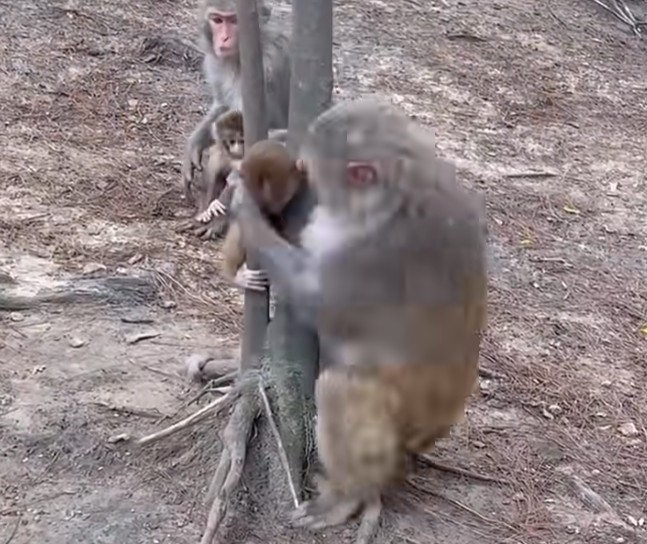In the dense forests of South Asia, a tale unfolded that captivated primatologists and casual animal lovers alike. It was a story that challenged our understanding of emotion in non-human species—an intense journey from grief to calculated retaliation, told not through words, but through actions that reverberated through an entire troop of monkeys.
It began with tragedy. A mother macaque, known to researchers as Maya, lost her infant in a brutal and seemingly senseless attack. The perpetrator? A high-ranking male within the troop who, in a display of dominance or perhaps a calculated move to bring the mother back into estrus, killed the helpless newborn. Such behavior, while not unheard of in the primate world, is rare and usually triggers temporary social turbulence. But what happened next was anything but typical.
Instead of retreating into mourning, Maya became a force of nature. Observers noted a dramatic shift in her demeanor—she became withdrawn at first, then hyper-focused. She avoided grooming sessions and rarely interacted with others in the troop, save for a small group of closely bonded females. Over the following weeks, her behavior evolved into something astonishing: a coordinated campaign of vengeance.
Through what appeared to be an alliance with other lower-ranking females—many of whom had also suffered losses at the hands of dominant males—Maya began challenging the established hierarchy. Together, they sabotaged the aggressor’s access to food sources, interrupted his mating attempts, and even instigated direct physical confrontations. The coalition’s tactics were subtle at first but escalated over time. By the third month, the male who had killed her infant had been ostracized from the core group, isolated and wounded after multiple skirmishes.
Such prolonged, deliberate acts of retaliation are almost unheard of in the wild. Experts were left stunned, not only by the emotional depth suggested by Maya’s response but also by the social intelligence required to plan and execute her vendetta. While anthropomorphism is a constant danger in interpreting animal behavior, the evidence in Maya’s case was overwhelming. Her grief had not just lingered—it had metastasized into a slow-burning rage with a clear and relentless target.
The story gained traction beyond academic circles after footage of Maya’s actions was released by a documentary crew stationed in the area. Ethologists debated the implications: Could non-human primates harbor a concept of justice? Was this vengeance, or a form of adaptive behavior masked by emotion? What remained certain was that Maya’s experience blurred the line between instinct and emotion in ways that forced a reevaluation of primate social complexity.
Maya’s story, both heart-wrenching and awe-inspiring, reminds us that the emotional lives of animals are not so distant from our own. Her transformation from grieving mother to vengeful strategist continues to challenge the boundaries of what we believe animals are capable of—and hints that perhaps, in some corners of the animal kingdom, justice is not just a human invention.

